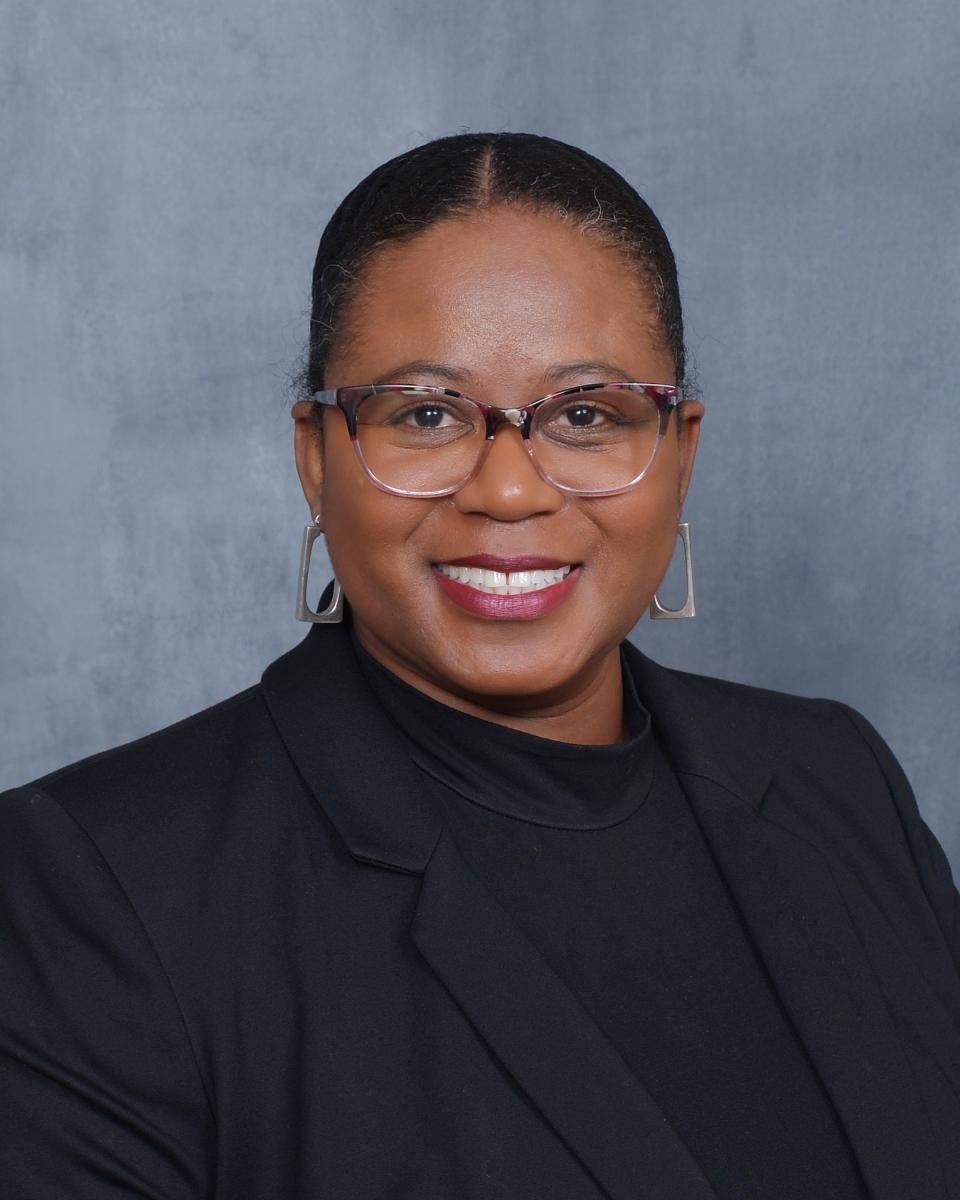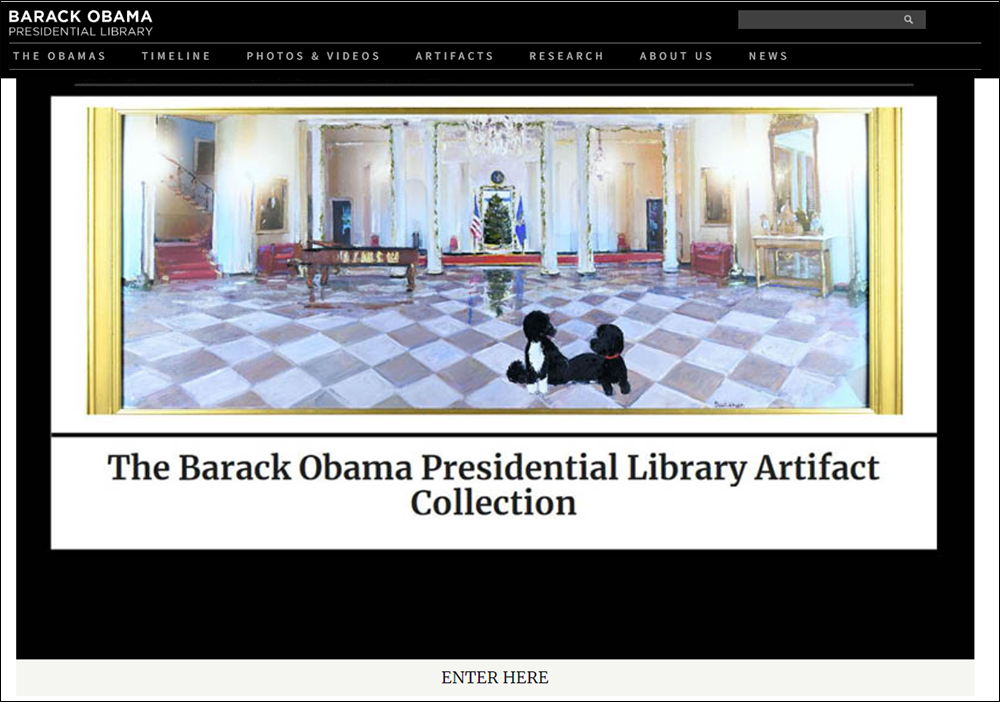
Kenvi Phillips, New Obama Library Director, Puts Emphasis on Access
By Mary C. Ryan | National Archives News
WASHINGTON, October 8, 2024 — The first primarily digital Presidential Library presents an exciting opportunity to broaden outreach and increase access to the records, according to the Barack Obama Presidential Library’s first permanent director.
Dr. Kenvi Phillips took up her duties on June 16, 2024. Three months into her tenure, she talked to National Archives News about how she is approaching her new role and her vision for the future of the Obama Library.
“This is a historic administration for a variety of reasons, not just that he was the first Black President,” Phillips said. “And it means a great deal to me. I’ve always had a passion for the preservation of the work and history, lives, and experiences of people of color, and this is right in line with that.”
Phillips came to the National Archives after 20 years in libraries, historic sites, and academic institutions. She served as the first Director of Diversity, Equity, and Inclusion at Brown University Library. Phillips was the first Johanna-Marie Frankel Curator for Race and Ethnicity at Harvard University’s Schlesinger Library, focused on the history of women in America. She also served as assistant curator of manuscripts at the Moorland-Spingarn Research Center at Howard University, and earlier as a historian at the Maryland-National Capital Park and Planning Commission. Her experience across different types of repositories has given her the opportunity to engage with a variety of audiences and make that engagement as broad as possible, especially in an increasingly digital environment.
Phillips said she sees her role as the library’s inaugural Director as an extraordinary opportunity to preserve the legacy of a transformative Presidential administration. She also sees it as a chance to do something new and innovative in recordkeeping.
“It’s absolutely important and remarkable to make sure that we are chronicling the First Family’s experience and the administration and all the things they were able to accomplish—and the challenges they faced,” Phillips continued. “Bringing the Obama Library’s records to the public will help tell the story of our nation in this transformative moment.”
The Obama Library is a new type of Presidential Library with the goal of preserving its records and making them accessible in digital format to the greatest extent possible. Unlike earlier Presidential Libraries, the Obama Library will not have a physical museum administered by the National Archives, and its emphasis will be on creating an all-digital repository. Phillips sees the library as being on the cusp of a new way of engaging with the public.
About 95 percent of the Obama administration’s records are born-digital, and the 5 percent remaining comprises 25 million textual pages, Phillips said. Library staff are able to digitize an average of 100,000 pages a week, and they have also photographed 35 percent of the more than 35,000 gift objects sent to the White House.
The Obama Library’s website recently released its biggest collection to date of digitized artifacts, according to Phillips. The items include domestic and state gifts from the Presidency as well as pre- and post-Presidency years. Among the thousands of objects, the public will find images and information on books, Michelle Obama’s gowns, items relating to the 150th anniversary of the Emancipation Proclamation, jewelry, athletic gear, Christmas ornaments, gifts sent to the Obamas’ dogs Bo and Sunny, and so much more.
The library’s large-scale work in digitizing its holdings has made it a leader in digitization at the National Archives. This fall, the library shared what they have learned and the workflows they have developed with their colleagues across the agency. At a digitization summit on September 24 and 25, staff from every Presidential Library and Research Services came together to discuss digitizing archival material and collections and how the agency will move forward in this new arena.
Pointing out that we live in a time “when everybody carries several computers around with them—their phone, their watch, their iPad, their laptop,” Philips said she embraces the opportunities that come with a wider digital reach. “My vision,” she said, “is to get to a place where people can ‘pull us out of your pocket’” to gain a better understanding of the Obama administration.
Phillips said one of her priorities is to reach out to those who may not have already engaged with the National Archives or its Presidential Libraries. She said she wants to ensure that the Obama Library, through its public programs and outreach, brings the records of this Presidency to everyone from small children to senior citizens and every citizen in between.
As the library is not tied to a physical space, the staff can bring its resources to a broader audience of researchers, students, educators, and the simply curious. To succeed at extending its reach, the library will build on its existing relationships with organizational partners, like the Obama Foundation, and seek out future partnerships.
A big change is coming for the Obama Library in late 2025, Phillips said. The staff and physical records currently housed in the Chicago area will move to the National Archives at College Park, MD. Phillips says the library will maintain its ties to Chicago while establishing new relationships in the Washington, DC, area. The work of building a robust digital platform will continue, and the Obama Library will strive to be a community-engaged repository in both College Park and Chicago.
“The staff here has done a really remarkable job of moving forward while waiting on a new director,” Phillips said. “I cannot say enough about the team of folks who are doing the digitization, who are doing the photography, who are doing the FOIA releases.”
Phillips said she is looking forward to making the Obama Library’s records as accessible as possible and using the digital library to promote connectedness. She looks forward to opening a virtual window to the library’s collections so that people can engage and feel connected to these public records that belong to all of us.

